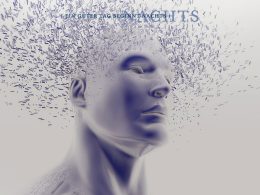You are lying comfortably in bed, blissfully asleep and suddenly wake up because an arm, a leg or your hands have fallen asleep. The tingling that occurs is not only unpleasant, it can even be painful. Many people are probably familiar with this symptom. Some people’s arms or legs rarely fall asleep at night, while others experience this on a regular basis. But why do whole limbs or parts of them go numb during sleep? Is this a cause for concern? And what can be done to prevent it? As always, you can find out all this here at billerbeck, your expert on all aspects of sleep.
What is behind the phenomenon of limp arms and legs?
Limbs that have fallen asleep feel numb and furry, tingling, burning and painful. It almost feels as if the part of the body that has fallen asleep does not belong to us. It is an unpleasant feeling that makes many people uncomfortable, especially when it occurs in the middle of the night and wakes us up.
The phenomenon behind the numbness and tingling in the arms, legs and other parts of the body is called paraesthesia. This is an umbrella term that is used for sensations of various causes. Paraesthesia occurs, for example, when nerves are exposed to a certain amount of pressure over a long period of time. These are usually harmless and disappear completely. However, there are also paraesthesias – usually due to illness – in which nerves have been permanently damaged. In these cases, the discomfort can persist over a longer period of time and may even become chronic.
Mostly harmless and reversible: obdormition
Everyone probably knows it. You’re sitting with your legs crossed. After a while, the leg on top becomes numb and tingles. However, this unpleasant feeling quickly subsides when you move your leg and adopt a different posture. This generally harmless and reversible form of paraesthesia is also known as obdormition. The numbness of parts of the body is caused by an unfavourable posture that exerts pressure on certain nerves, resulting in numbness, burning and tingling sensations. Changing the posture of the limbs and body usually brings about a rapid improvement. Obdormitions can occur not only during the day, but also at night during sleep.
Why do arms fall asleep at night?
In most cases, the answer to this question is quite simple. As a rule, the sleeping position is so unfavourable that a nerve is compressed and the affected limb – such as the arm, leg or even just the hand or foot – falls asleep and becomes numb. The discomfort quickly disappears again after a change in posture, but the sleeping person is awake for the time being and may need some time to regain rest. These types of interruptions to sleep are therefore harmless, but nevertheless annoying. Especially if the person concerned already has problems falling asleep and staying asleep.
How can you prevent your arms and legs from falling asleep at night?
Anyone who often suffers from their arm falling asleep at night or their leg going numb in their sleep should reconsider their sleeping habits, especially their sleeping position. It may be possible to change this quite simply. For example, an unsuitable mattress or the wrong pillow may be the cause of obdormity during sleep. If you are lying on bedding that is not adapted to your individual needs and preferences, you may not only have to deal with back pain and tension, but also with your arm or leg falling asleep at night.
In our blog you will find several articles that could be helpful on this topic, such as Sleeping position: side sleeper, Sleeping position: back sleeper or Sleeping position: stomach sleeper. In our shop you will also find suitable bedding for all sleep types, for example the HEINZI stomach sleeper pillow with fibre or down filling or the SINUS side sleeper pillow with fibre filling.














